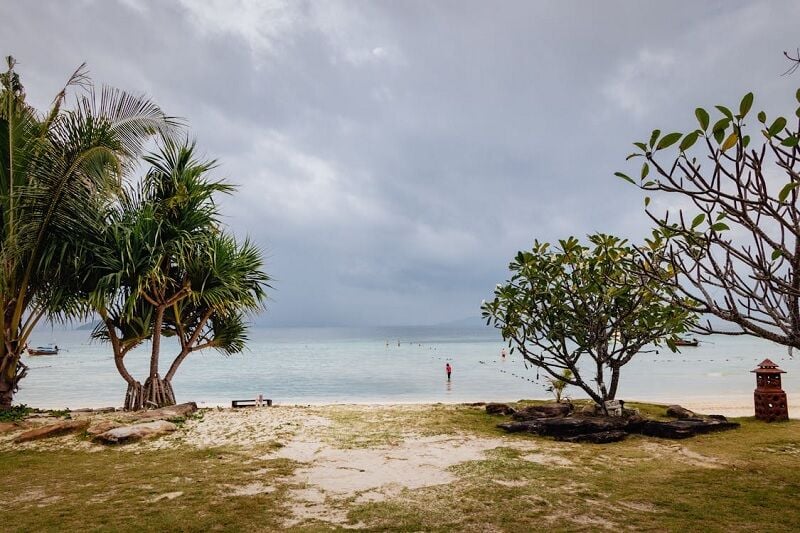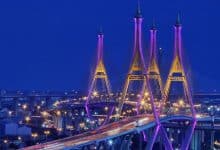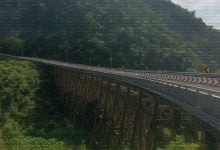Koh Phayam fears Land Bridge project will disrupt island’s harmony

Koh Phayam, located 17 kilometres off the Andaman Sea coast, is known for its unspoiled forests and pristine beaches, making it a popular destination for tourists seeking peaceful recreation and the charming lifestyle of local fishers. Covering a 35km² area, it stands as the second largest island in Ranong Province.
In recent years, Koh Phayam has garnered attention as a model of sustainable tourism and economic growth, while preserving its natural resources. Local authorities highlight that tourism significantly boosts Ranong’s economy, contributing up to one billion baht annually, which is a substantial portion of the province’s total revenue of three billion baht.
Chaiyut Anusiri, acting permanent secretary of the Koh Phayam administrative organisation, stated that Koh Phayam’s tourism sector alone can make up to one billion baht a year.
“That is a significant portion considering the province’s overall annual revenue of three billion baht.”
The island maintains its allure as a sustainable tourism destination through cooperation between the public and private sectors, adhering to strict conservation measures. However, a new threat looms over the island.
The government’s proposed Land Bridge project, aimed at enhancing connectivity between the Gulf of Thailand and the Andaman coast, has raised concerns among the public and conservationists. They fear that this development will disrupt the island’s environmental harmony.
Deep-sea ports
The Land Bridge project involves constructing deep-sea ports in Chumphon and Ranong, linked by a 100-kilometre expressway and rail network. Koh Phayam is near the proposed 5,600-rai Ranong deep-sea port at Laem Ao Ang on the Andaman coast.
The plan includes three breakwaters totalling 4km in length and approximately 7,000 rai of sea reclamation. This development is expected to impact several areas, including the Ratchakrut sub-district, Koh Phayam sub-district, Mueang district, Mueang Kluang sub-district, and Kapoe district. It will also affect six communities, two national parks, two marine and coastal protected areas, national reserved forests, and coral reserves.
Prime Minister Srettha Thavisin views the project as a cornerstone of his efforts to boost the economy. However, locals fear that the development will disrupt their communities and make survival difficult. In December last year, they met the prime minister, urging the government to carefully consider public opinion, particularly from residents.
Their main concern is that the project’s feasibility study is incomplete, yet the 62 year old Thai prime minister is trying to attract international investors. They believe the project will degrade the environment, disrupt the economy, and threaten the island’s tranquillity.
As plans progress, the issue of land expropriation and environmental impact has sparked anxieties among locals in Ranong’s Koh Phayam. Many areas are inhabited by ethnic groups and sea Romas, most of whom lack formal land title deeds, raising questions about compensation and property rights. Government funding and public consultations are crucial in addressing these issues.
During a mobile cabinet meeting in Ranong in January, government officials and local tourism operators were divided on the Land Bridge development. While supporters anticipate economic benefits, others worry about disruptions to the local environment and traditional ways of life. Koh Phayam remains a focal point of concern.
Coastal encroachment
Locals protested against the Land Bridge during the meeting, arguing that the project could encroach on coastal areas and farmland, affecting fishing communities, tourism operators, and farmers. Parinya Sakulthong, the village headman of Koh Phayam sub-district, sees potential tourism opportunities but is cautious about the environmental repercussions. He noted the issues of soil erosion and its adverse impact on the marine ecosystem.
Koh Phayam’s economic lifeline largely hinges on tourism, said Parinya, but when peak tourism season ends, the island needs revenue from agriculture and aquaculture to ensure year-round prosperity, especially during the monsoon season. Hence the need for sustainable and comprehensive development.
Pradit Rungroj, President of Koh Phayam Administrative Organization, mentioned that public hearings held in Ranong and Chumphon in August last year did not ease the concerns of various agencies, civil society groups, and locals.
Some worry about the project’s cost-effectiveness and logistical challenges faced by shipping operators. Economists argue that the significant investment required may outweigh the potential benefits, particularly for shipping operators navigating between Chumphon and Ranong.
As discussions around the Land Bridge project continue, the government remains open to input from all stakeholders. Koh Phayam’s future hangs in the balance, with residents and environmental advocates opposing initiatives that threaten the island’s natural beauty and tranquillity.
The government faces the challenge of balancing economic development with environmental preservation, reported Bangkok Post.
Latest Thailand News
Follow The Thaiger on Google News:


























